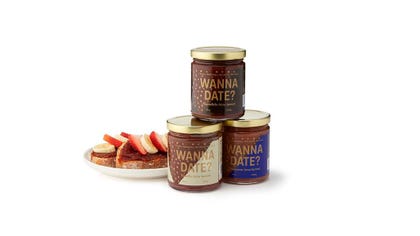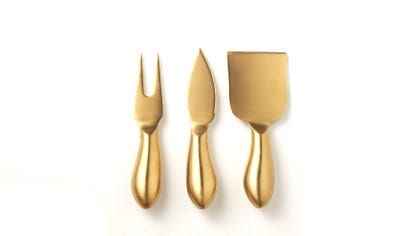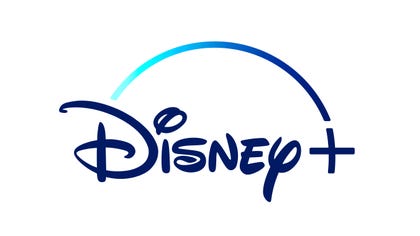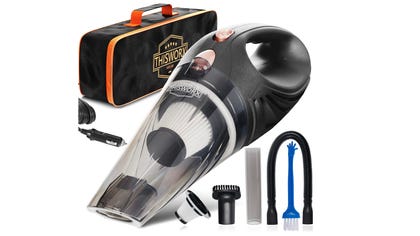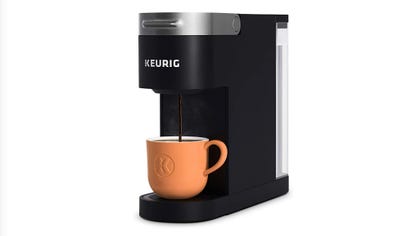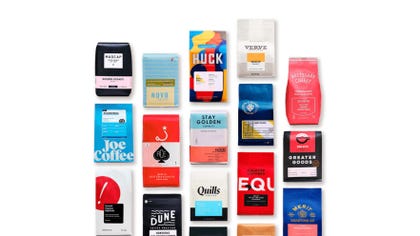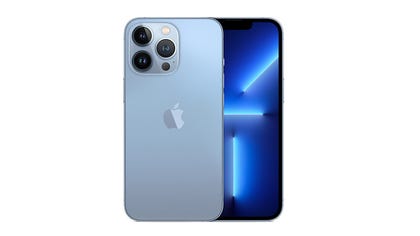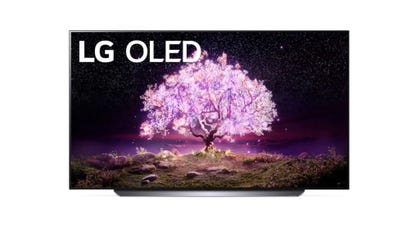Technologies
2022 Black Friday: Make Sure You Avoid All the Elaborate Scams
Scammers don’t take a break during the holidays. Learn what to watch for to protect yourself.

This story is part of Gift Guide, our year-round collection of the best gift ideas.
Black Friday arrives the day after Thanksgiving — which is Nov. 25 this year. It’ll be a day filled with deals on items like headphones and TVs, but with all that potential money flowing from customers to stores, cybercriminals are unfortunately looking to steal some of it.
Scammers work year round, but they turn up their efforts during the high-spending holiday season to exploit the spirit of giving.
The scams range far and wide — as retailers like Amazon, Best Buy and Walmart roll out deals over the holidays, fraudsters create elaborate websites to trick you into spending money on products you’ll never receive. You may receive text messages or emails claiming you’re eligible for a refund for an item you never purchased, just so thieves can get your credit card information. You might even be enticed into donating to a charity that provides homes for abandoned puppies — only to find out it doesn’t actually exist.
Scams come in all shapes and sizes, but there are always red flags to help spot them. Here’s what you need to know about Black Friday scams and how to avoid becoming a victim this holiday season.
For more about security and privacy this holiday season, check out how to protect yourself from identity theft, how to protect your phone app privacy, and the most common cryptocurrency scams.
Fake websites and fraudulent apps go ‘phishing’
In a phishing scheme, the goal is for hackers to get their hands on your personal information, like your credit card number, social security or account password. Pretending to be a large retail corporation, the fraudsters send out an official-looking email or text message, usually with a link to a fraudulent website designed to look just like a legitimate site.
Researchers at security firm Avanan discovered that hackers were sending out spoofed Amazon order notification emails. The email resembled your run-of-the-mill order confirmation, except that the order is false and the charge is significant.
Naturally, if you believe you’re being charged for a substantial amount, you would want to reach out to Amazon. But in this instance, if you use the link in the phishing email to get in contact, you’ll be redirected to a fake Amazon webpage with a false phone number to dial. If you call, the fraudsters won’t initially pick up, but they’ll soon call back, asking you to provide your card number, expiration date and CVV to «cancel the order.» And just like that, they’ve got your information.
These types of attacks are commonplace throughout the year, but expect a surge in messages claiming to be from Amazon, Best Buy, Walmart, Target or other large retailers during the holidays.
If you receive an email asking you to update your payment method or requesting other personal information, contact the company’s help desk to make sure the email is legit before you do anything else.
Other ways to identify a phishing email, according to the Federal Trade Commission and StaySafeOnline.org, include:
- The sender’s email address looks almost right but contains extra characters or misspellings.
- There are misspellings or bad grammar either in the subject line or anywhere in the body.
- They address you with generic terms («Mr.» or «Ms.» or «Dear Customer») instead of by name.
- The message warns that you need to take immediate action and asks you to click a link and enter personal details, especially payment information.
- The messages promise a refund, coupons or other freebies.
- The company logo in the email looks low-quality or just plain wrong.
Credit card skimming goes all-digital
You’ve seen it in movies. A hacker places an object over a card reader, disguised to look like part of the ATM, and then waits for people to swipe their cards. A day or week later, the thief takes the object — known as a skimmer — back and collects the mountain of stolen card information stored inside, which they can then use to make purchases, withdraw money and more.
Instead of using physical hardware to steal payment card numbers, hackers can insert malicious code directly on a website to do the same thing as traditional skimming, but with online payment information instead.
Regarding e-skimming incidents — sometimes called Magecart attacks after the name of the software used — Tim Mackey, principal security strategist for Synopsis, a digital security company, warns, «There isn’t an obvious way for the average person to be able to identify if or when a website has been compromised. The only potential tell-tale sign might be that the website itself doesn’t quite look ‘right.'»
Mackey suggests a few strategies you can can use to protect yourself:
- Don’t save your credit card information on retail sites.
- If possible use a third-party payment method like Apple Pay, Google Wallet or PayPal.
- Enable purchase alerts on all your credit cards.
- Disable international purchases on all credit cards.
- Only make purchases over your home network or cellular network, never on a public Wi-Fi where your payment could be intercepted.
Avoid the ‘Secret Sister’ gift exchange — it’s a pyramid scheme
Originating on Facebook, this sketchy gift exchange among internet strangers plays off the popular workplace practice of «Secret Santa,» a game where each person in a group buys a present for one other randomly selected group member, without the gift-giver revealing their identity.
Instead, in Secret Sister, it’s a pyramid scheme dressed up in holiday clothes, according to the Better Business Bureau. The «Secret Sister» exchange invitation promises you’ll receive about $360 worth of gifts after purchasing and mailing a $10 gift for someone else. A variation includes swapping bottles of wine. And there’s even «Secret Santa Dog,» in which you gift money to a «secret dog.»
Unfortunately, bad math hasn’t stopped this scam from resurfacing year after year. If you fall for it, you’ll probably be out 10 bucks when you don’t receive any gifts in return. You might lose personal details too, because the scam involves sending your name, email address and phone number to people you’ve never met in person.
The Better Business Bureau recommends you deal with any request to become a Secret Sister by ignoring it — do not give your personal details to online strangers. You can also report the invitation to Facebook or whichever social network you were approached on.
Your donations might be going to a ‘faux charity’
During the holiday season, it’s not uncommon to give back to the community. In fact, nonprofit organizations typically see an increase during the fall. The last three months of the year make up 36% of all charitable giving during the year, according to Blackbaud Institute, which creates fundraising applications.
Unfortunately, scammers take advantage of this generosity to make a bundle for themselves.
The way these charity fraud scams typically work are by impersonating other successful charities. And it’s no wonder they work: The scammers come up with real-sounding charity names, create credible websites, run successful social media campaigns — and they’re persistent.
Scammers typically call you using local phone numbers, which give you a false sense of security. However, it’s incredibly easy to spoof an area code. Next they’ll make their pitch, and it’ll be a good one. It will tug at your heart-strings, but they’ll never actually specify how they’ll help. And they may even claim that you’ve made a donation before, and suggest that you make another, and that if you do, it’ll be tax-deductible. And it’ll all be a lie.
If you get a call from a charity and sense some red flags, the AARP and FTC suggest that you do the following:
- Do your research. Use a watchdog like CharityWatch to get more information about a charity and learn how credible it is. Or use Google.
- Pay close attention to the charity name and website. False charities like to mimic other popular charities. If it seems too close in name to another, it might not be real.
- Keep track of your donations. Even if you accidentally donate to a scammer, you need to ensure that the donation isn’t recurring.
- Don’t give away all your personal information. Of course it’s normal to provide your card information, but don’t do the same with your Social Security number or bank account number.
- Don’t make a cash donation. Unless you’re certain about a charity’s credibility, don’t give away cash, gift cards, or cryptocurrency.
For any charitable donations that you make, you can also use the IRS tax-exempt organization search tool to make sure that the charity you’re contributing to is legitimate and that your gift can be deducted on your income tax return.
Find The Perfect Gift
Technologies
Today’s NYT Strands Hints, Answers and Help for Jan. 9 #677
Here are hints and answers for the NYT Strands puzzle for Jan. 9, No. 677.
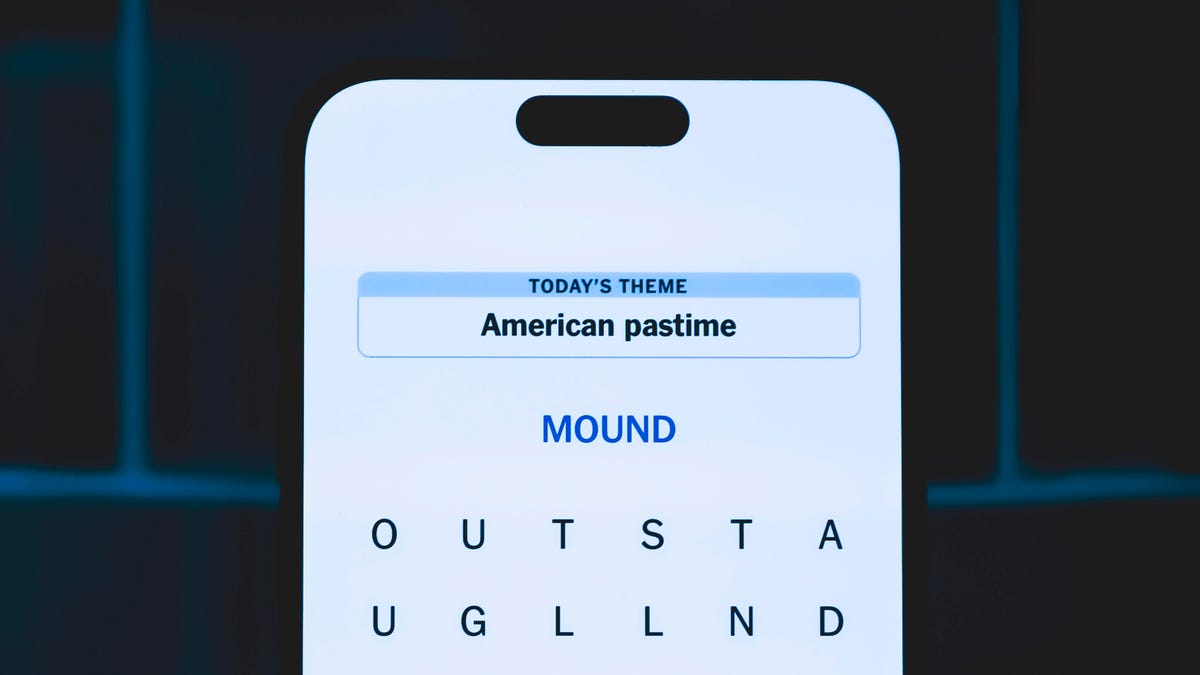
Looking for the most recent Strands answer? Click here for our daily Strands hints, as well as our daily answers and hints for The New York Times Mini Crossword, Wordle, Connections and Connections: Sports Edition puzzles.
Today’s NYT Strands puzzle is a fun topic — but one of the answers describes something I’ve never heard of before. Also, some of the answers are difficult to unscramble, so if you need hints and answers, read on.
I go into depth about the rules for Strands in this story.
If you’re looking for today’s Wordle, Connections and Mini Crossword answers, you can visit CNET’s NYT puzzle hints page.
Read more: NYT Connections Turns 1: These Are the 5 Toughest Puzzles So Far
Hint for today’s Strands puzzle
Today’s Strands theme is: For cubs fans.
If that doesn’t help you, here’s a clue: Like Gentle Ben.
Clue words to unlock in-game hints
Your goal is to find hidden words that fit the puzzle’s theme. If you’re stuck, find any words you can. Every time you find three words of four letters or more, Strands will reveal one of the theme words. These are the words I used to get those hints but any words of four or more letters that you find will work:
- LAIR, RAIL, CROP, LAID, BALD, DEAN, BROW, DIZZY
Answers for today’s Strands puzzle
These are the answers that tie into the theme. The goal of the puzzle is to find them all, including the spangram, a theme word that reaches from one side of the puzzle to the other. When you have all of them (I originally thought there were always eight but learned that the number can vary), every letter on the board will be used. Here are the nonspangram answers:
- BLACK, BROWN, GRIZZLY, PANDA, POLAR, SPECTACLED (That last one is the one I’ve never heard of! But it’s real!)
Today’s Strands spangram
Today’s Strands spangram is BEARSINMIND. To find it, start with the B that’s five rows to the right and three letters down, then wind up, over and down the whole far-right row.
Don’t miss any of our unbiased tech content and lab-based reviews. Add CNET as a preferred Google source.
Toughest Strands puzzles
Here are some of the Strands topics I’ve found to be the toughest.
#1: Dated slang. Maybe you didn’t even use this lingo when it was cool. Toughest word: PHAT.
#2: Thar she blows! I guess marine biologists might ace this one. Toughest word: BALEEN or RIGHT.
#3: Off the hook. Again, it helps to know a lot about sea creatures. Sorry, Charlie. Toughest word: BIGEYE or SKIPJACK.
Technologies
Today’s NYT Mini Crossword Answers for Friday, Jan. 9
Here are the answers for The New York Times Mini Crossword for Jan. 9.

Looking for the most recent Mini Crossword answer? Click here for today’s Mini Crossword hints, as well as our daily answers and hints for The New York Times Wordle, Strands, Connections and Connections: Sports Edition puzzles.
Need some help with today’s Mini Crossword? The Across clues were kind of tough today. Read on for all the answers. And if you could use some hints and guidance for daily solving, check out our Mini Crossword tips.
If you’re looking for today’s Wordle, Connections, Connections: Sports Edition and Strands answers, you can visit CNET’s NYT puzzle hints page.
Read more: Tips and Tricks for Solving The New York Times Mini Crossword
Let’s get to those Mini Crossword clues and answers.
Mini across clues and answers
1A clue: Question in a late-night text
Answer: YOUUP
6A clue: Plentiful
Answer: AMPLE
7A clue: Saint ___ and Nevis (Caribbean nation)
Answer: KITTS
8A clue: Baby-bringing bird
Answer: STORK
9A clue: Take care of the tab
Answer: PAY
Mini down clues and answers
1D clue: Himalayan herbivores
Answer: YAKS
2D clue: Fail to include
Answer: OMIT
3D clue: «High five!»
Answer: UPTOP
4D clue: The «U» of UV rays
Answer: ULTRA
5D clue: Annoying to deal with
Answer: PESKY
Don’t miss any of our unbiased tech content and lab-based reviews. Add CNET as a preferred Google source.
Technologies
I Got Up Close and Personal With Boston Dynamics’ New Atlas Robot
Before Atlas takes its first steps into the world of work later this year, I found myself face-to-face with CES 2026’s most talked-about robot on the show floor.

When I say that I went hands-on with the new Boston Dynamics Atlas robot, I mean that I actually held hands with it. This humanoid robot, which CNET just awarded the Best Robot of CES Award, is one of the most advanced in the world, and I couldn’t pass up the opportunity to get up close and personal with it.
This product version of the robot, which is set to be shipped to Hyundai factories imminently to start working, has been the talk of CES this year. The specific Atlas robot I encountered was a static model that wasn’t turned on or fully operational. Our interactions were, therefore, sadly one-sided. Still, I ran my hands over its soft-touch plastic shell and gently prodded at its finger joints, wondering how it would feel if they gripped me back.
People tend to have varying feelings about humanoid robots — understandable given that they are built to some degree in our image, while also usually being stronger than us, with «brains» that we don’t fully understand. Atlas definitely evokes contradictory emotions for me — even more so when I stood face-to-face with it.
I’m in awe of the engineering, a little fearful of its capabilities, hesitant about what it could mean for the future of humanity and charmed by its design and styling. The periwinkle blue iteration of Atlas that I met on the show floor at CES 2026 almost bears more resemblance to a Dyson product than it does the industrial robots that defined Boston Dynamics’ early days, when it was best known for its work with DARPA.
«There’s a lot of really specific things about this robot that probably look a little weird,» said Zachary Jackowski, Boston Dynamics VP and general manager of Atlas. He pointed to the legs, which he described as «like nothing anyone else was doing.»
Atlas’ thighs are narrow set and in line with the torso, while the calves are wider set, attached to their upper counterparts with a circular joint. This robot is, in fact, all subtle curves and soft lines. There are no harsh edges or stark angles.
During a year when CES has been flooded with humanoid robots, Atlas definitely does stand out due to its design. It appears both less classically human and less industrial than some of its peers, while also lacking the often intimidating, featureless faces they tend to exhibit. Instead, it has two low-set cameras resembling eyes placed where you’d usually expect a mouth to be. Its face is a perfect flat circle, defined by an LED halo that gives it a somewhat Pixar lamp effect.
I asked Jackowski why Boston Dynamics decided to skew so relatively unhuman with this version of its humanoid. «Well, it’s not a human,» he said. «It projects the wrong first impression about a robot to have it pretend to be something that it’s not.»
Particularly in the early days of humanoids, he added, robots won’t have anything like human-like intelligence. People should look at it and see it for what it is — a tool for performing tasks safely and efficiently.
In fact, most of the design decisions were made to keep Atlas as simple, scalable and safe as possible, Jackowski said. I remark that there’s some irony in thinking of a humanoid robot as simple, given the complexity of the technology and development process to bring Atlas to life.
The key to making it simple, Jackowski said, is having a strong enough grasp of the technology to «accomplish the complex thing of building a humanoid robot,» but then being able to take it apart and understand that you can use fewer computers and actuators in it while achieving the same results.
And it’s essential to Boston Dynamics that Atlas is perceived as simple. After all, it’s a general-purpose humanoid, which might eventually be sent far and wide to fulfil all manner of roles. Jackowski calls it the «ultimate generalist.»
Simplicity aside, there are aspects of Atlas that Jackowski believes set it apart from other humanoids at the show. «The repairability of this robot is crazy good,» he said. «The runtime is crazy good. The strength is unlike anything.»
From working in Hyundai’s manufacturing plants, Atlas’s job trajectory is to eventually graduate to many of the same industrial environments where Boston Dynamics’ Spot robot works, before moving to bussing tables in the service industry and eventually into the home. The robot will evolve between now and then, Jackowski said. However, this could be an early glimpse of the type of humanoid that will eventually be our housemate.
That’s some way away, though, which is probably for the best. As I gaze up at Atlas, which I’d guess is around the same height as my husband, my feeling is that, however impressive Atlas is, I’m still not ready for it to move in.
-

 Technologies3 года ago
Technologies3 года agoTech Companies Need to Be Held Accountable for Security, Experts Say
-

 Technologies3 года ago
Technologies3 года agoBest Handheld Game Console in 2023
-

 Technologies3 года ago
Technologies3 года agoTighten Up Your VR Game With the Best Head Straps for Quest 2
-

 Technologies4 года ago
Technologies4 года agoBlack Friday 2021: The best deals on TVs, headphones, kitchenware, and more
-

 Technologies4 года ago
Technologies4 года agoGoogle to require vaccinations as Silicon Valley rethinks return-to-office policies
-

 Technologies4 года ago
Technologies4 года agoVerum, Wickr and Threema: next generation secured messengers
-

 Technologies4 года ago
Technologies4 года agoOlivia Harlan Dekker for Verum Messenger
-

 Technologies4 года ago
Technologies4 года agoiPhone 13 event: How to watch Apple’s big announcement tomorrow









































